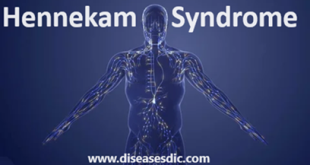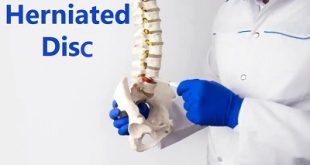Definition
Huntington’s disease (HD) is a fatal genetic disorder that causes the progressive breakdown of nerve cells in the brain. It deteriorates a person’s physical and mental abilities during their prime working years and has no cure. HD is known as the quintessential family disease because every child of a parent with HD has a 50/50 chance of carrying the faulty gene. Today, there are approximately 30,000 symptomatic Americans and more than 200,000 at-risk of inheriting the disease.
Normal brain and affected brain
Types of Huntington’s Disease
Adult-onset Huntington’s disease:
This is the most common form of Huntington’s disease. People with adult-onset Huntington’s disease usually develop symptoms in their mid-40s and 50s.
Juvenile Huntington’s disease:
Children and teenagers have this form of Huntington’s disease, which is very rare. Children with Huntington’s disease often have symptoms similar to Parkinson’s disease. They may also develop problems with schoolwork.
History
- Huntington’s Disease was first recognised as an inherited disorder in 1872 when a 22-year-old American doctor, George Huntington, wrote a paper called On Chorea. His paper was later published in the Medical and Surgical Reporter of Philadelphia and the disorder he described became known as Huntington’s chorea.
- “Chorea” comes from the Latin and Greek words meaning chorus or a group of dances. The term was given to many so-called “dancing disorders” that became noticed in the Middle Ages.
- In those days, people with chorea, like the involuntary muscle jerks and twitches characteristic of HD, were often thought to be possessed by devils. It is believed that at least one of the alleged “witches” executed in Salem, Massachusetts in the 1690’s had HD.
- Today the term Huntington’s (or Huntington) Disease is more commonly used than Huntington’s Chorea. Throughout the eighteenth and nineteenth centuries, chronic adult hereditary chorea was poorly understood because people who had the HD gene died before the symptoms could develop. Now that we live longer, the HD gene has more time to express itself.
- The discovery of the gene in 1993 was a major milestone in the history of HD. The scientific community worked very hard to find the gene and the process was long and tedious, requiring great patience and perseverance. Nevertheless the job is not over until an effective treatment is found. The scientists working on HD today are brilliant and passionately committed to finding a cure. It’s hoped that one day researchers will find the answer to the puzzle of HD and support groups like this Association will no longer have to exist.
Prevalence across world wide
It is difficult to tell how common HD is in a population. In Western countries it’s estimated that about five to seven people per 100,000 are affected by HD. There are a few isolated populations in Western Europe where HD is unusually common.
A very high concentration of HD has also been found in the Lake Maracaibo region of Venezuela where the prevalence of HD is about 700 per 100,000.
Risk factors of Huntington’s Disease
The increased physical and emotional stress associated with HD can cause other problems as well. Chronic stress has been linked to high blood pressure, increased risks for heart attacks, and tumor growth.
People with HD often lack this coordination, and food will accidentally enter the respiratory tract, leading to choking. Moreover, when food particles manage to get into the trachea (the “wind pipe” leading to the lungs), instead of the esophagus (the “food pipe” leading to the stomach), the lungs can become infected and cause what is known as aspiration pneumonia.
Risk of HD
Causes of Huntington’s Disease
- The faulty gene that causes Huntington’s disease is found on chromosome number four. A normal copy of the gene produces huntingtin, a protein. The faulty gene is larger than it should be and produces a larger form of huntingtin.
- Cells in parts of the brain – specifically, the basal ganglia and parts of the cortex – are very sensitive to the effects of the abnormal huntingtin. This makes them function poorly and eventually die.
- The brain normally sends messages through the basal ganglia and cortex to control movement and thinking, as well as motivation. If this part of the brain is damaged, it causes problems with control of movement, behaviour and thinking.
Symptoms of Huntington’s Disease
- Personality changes, mood swings & depression
- Forgetfulness & impaired judgment
- Unsteady gait & involuntary movements (chorea)
- Slurred speech, difficulty in swallowing & significant weight loss
- Loss of memory and judgment
- Disorientation and confusion
Diagnosis and testing of HD
A preliminary diagnosis of Huntington’s disease is based primarily on your answers to questions, a general physical exam, a review of your family medical history, and neurological and psychiatric examinations.
- Neurological examination
- Neuropsychological testing
- Psychiatric evaluation
- Brain imaging and function
- Genetic counseling and testing
- Predictive genetic test
Treatment and medications
No treatments can alter the course of Huntington’s disease. But medications can lessen some symptoms of movement and psychiatric disorders. And multiple interventions can help a person adapt to changes in his or her abilities for a certain amount of time.
Medication management is likely to evolve over the course of the disease, depending on the overall treatment goals.
Medications for movement disorders:
- Etrabenazine(Xenazine) is specifically approved by the Food and Drug Administration to suppress the involuntary jerking and writhing movements (chorea) associated with Huntington’s disease. A serious side effect is the risk of worsening or triggering depression or other psychiatric conditions. Other possible side effects include drowsiness, nausea and restlessness.
- Antipsychotic drugs,such as haloperidol (Haldol) and chlorpromazine, have a side effect of suppressing movements. Therefore, they may be beneficial in treating chorea. However, these drugs may worsen involuntary contractions (dystonia) and muscle rigidity.
Other drugs, such as risperidone (Risperdal) and quetiapine (Seroquel), may have fewer side effects but still should be used with caution, as they may also worsen symptoms.
- Other medicationsthat may help suppress chorea include amantadine, levetiracetam (Keppra, others) and clonazepam (Klonopin). At high doses, amantadine can worsen the cognitive effects of Huntington’s disease. It may also cause leg swelling and skin discoloration.
Medications for psychiatric disorders
- Antidepressantsinclude such drugs as citalopram (Celexa), escitalopram (Lexapro), fluoxetine (Prozac, Sarafem) and sertraline (Zoloft). These drugs may also have some effect on treating obsessive-compulsive disorder. Side effects may include nausea, diarrhea, drowsiness and low blood pressure.
- Antipsychotic drugs— such as quetiapine (Seroquel), risperidone (Risperdal) and olanzapine (Zyprexa) — may suppress violent outbursts, agitation, and other symptoms of mood disorders or psychosis. However, these drugs may cause different movement disorders themselves.
- Mood-stabilizing drugsthat can help prevent the highs and lows associated with bipolar disorder include anticonvulsants, such as valproate (Depacon), carbamazepine (Carbatrol, Epitol, Tegretol) and lamotrigine (Lamictal).
Psychotherapy
A psychotherapist — a psychiatrist, psychologist or clinical social worker — can provide talk therapy to help a person manage behavioral problems, develop coping strategies, manage expectations during progression of the disease and facilitate effective communication among family members.
Speech therapy
Huntington’s disease can significantly impair control of muscles of the mouth and throat that are essential for speech, eating and swallowing. A speech therapist can help improve your ability to speak clearly or teach you to use communication devices — such as a board covered with pictures of everyday items and activities. Speech therapists can also address difficulties with muscles used in eating and swallowing.
Physical therapy
A physical therapist can teach you appropriate and safe exercises that enhance strength, flexibility, balance and coordination. These exercises can help maintain mobility as long as possible and may reduce the risk of falls.
Instruction on appropriate posture and the use of supports to improve posture may help lessen the severity of some movement problems.
When the use of a walker or wheelchair is required, the physical therapist can provide instruction on appropriate use of the device and posture. Also, exercise regimens can be adapted to suit the new level of mobility.
Occupational therapy
An occupational therapist can assist the person with Huntington’s disease, family members and caregivers on the use of assistive devices that improve functional abilities. These strategies may include:
- Handrails at home
- Assistive devices for activities such as bathing and dressing
- Eating and drinking utensils adapted for people with limited fine motor skills
Prevention of Huntington’s Disease
- Huntington’s disease cannot be actually prevented. For people carrying mutated genes there is a 50% chance to have a child with this disease. Because of that, doctors advise counseling for everyone who has a close family member suffering from Huntington’s.
- Genetic counseling and blood tests could help these people to determine the presence of mutated gene responsible for this disease years before it shows any symptoms.
 Diseases Treatments Dictionary This is complete solution to read all diseases treatments Which covers Prevention, Causes, Symptoms, Medical Terms, Drugs, Prescription, Natural Remedies with cures and Treatments. Most of the common diseases were listed in names, split with categories.
Diseases Treatments Dictionary This is complete solution to read all diseases treatments Which covers Prevention, Causes, Symptoms, Medical Terms, Drugs, Prescription, Natural Remedies with cures and Treatments. Most of the common diseases were listed in names, split with categories.








once a person is tested early in life and found negativeh is there a chance later in life that the disease develops?
Since it is a genetic disorder it develops in future.